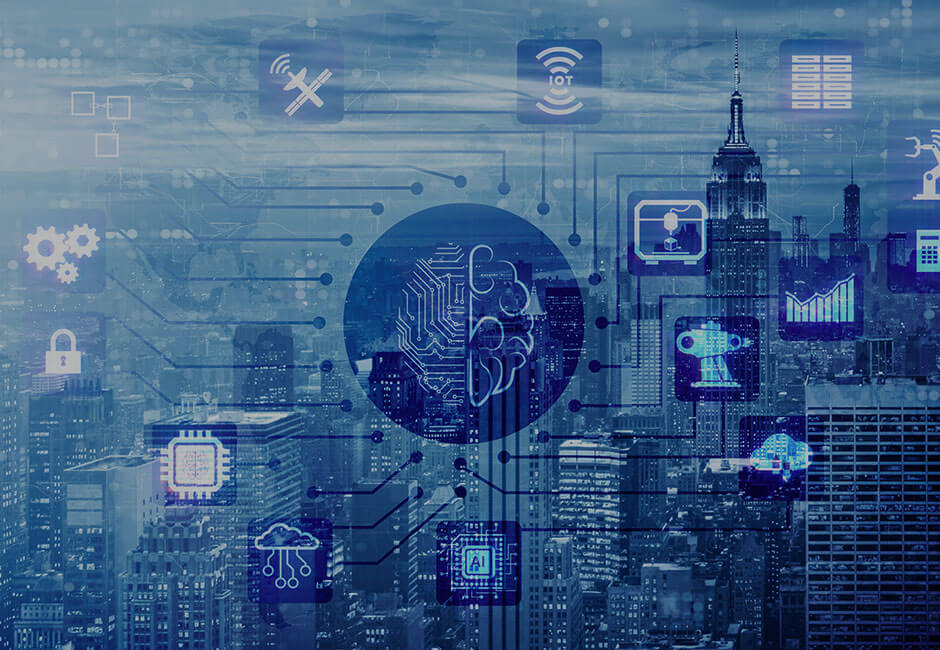Internet of Things (IoT) solution in Hong Kong will be a key player in propelling a new digital age, as the city gears towards smart city development. This reveals enormous potential in the development of both urban living and corporate progressions.
So, what does the internet of things actually mean? The term is very literal and as a high-level overview, essentially mean ‘smart connected systems’- connecting any devices (i.e. electronics/sensors/computers) to a network (i.e. Internet), enabling them to communicate and exchange data.
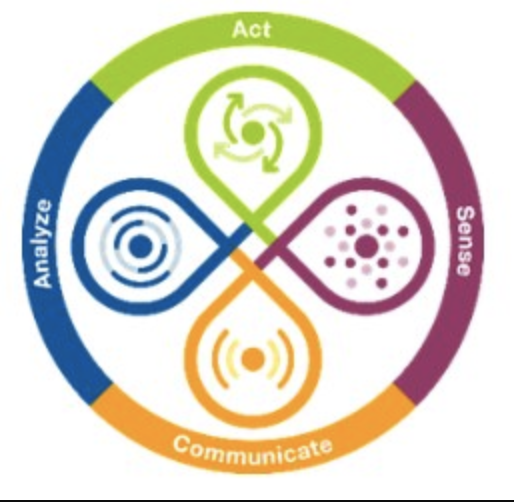
There are three core elements to the IoT: the physical, the ‘smart’, and the connectivity. We previously talked about artificial intelligence and deep learning– these act as the brain or the smart part of IoT. Nonetheless, the essence of IoT is built upon the roots of communication and connectivity. With the installation of sensors and software, even the simplest everyday objects can be made ‘smart’ through this inter-connection. This eventually negates or reduces the need for human supervision in day to day processes.
As the essence of ‘connectivity’ forms the backbone of IoT, anything that can be connected can be utilised.
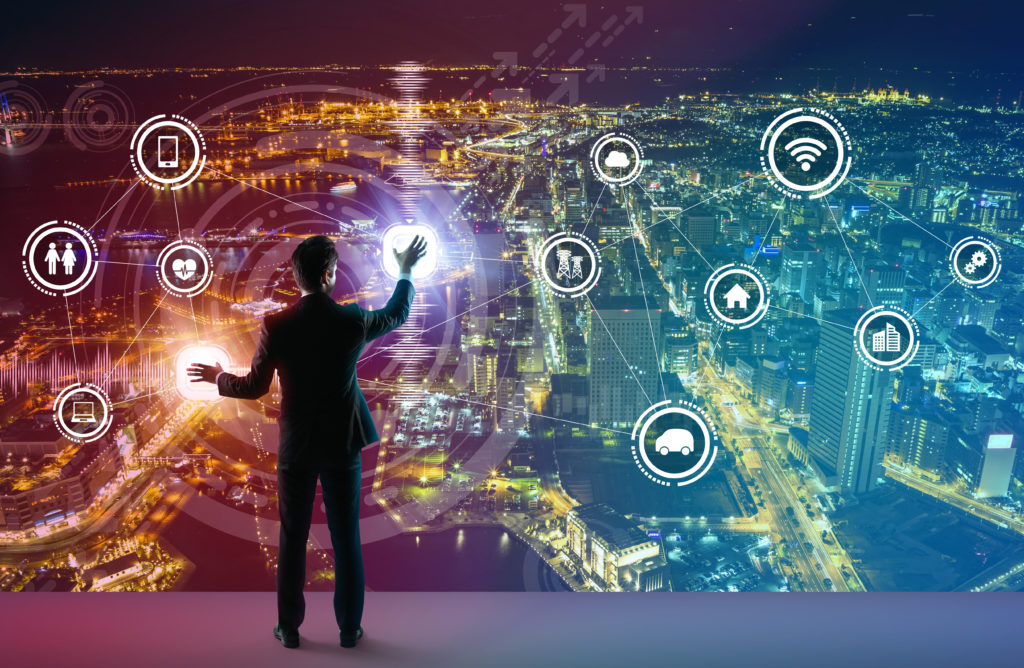
Introduction to the Internet of Things
To break it down, IoT is built on the concepts of cloud computing, machine learning algorithms and networks of data-gathering sensors, supported by connectivity and communication capabilities. Any device with a power switch can be connected one-to-one, one-to-many or many-to-many (e.g smart homes and cities).
Using embedded sensors, processors, and communication hardware/software, these devices are able to collect, send and act on data they acquire from their surrounding environments and from each other.
A complete IoT system typically consists of four main components:
- The sensors
- A connectivity engine
- Data processing via an ‘access gateway’ or ‘the cloud’
- User application
It can also be thought of as the flow from data acquisition to user application through one or many devices- let’s take a closer look at these components.
In the first component, sensor networks (in any form) are deployed in the field to collect data. The density of sensors deployed is directly proportional to the size of data that one aims to collect. With complicated IoT systems, there are usually several sensors located in different devices across a geographical area. When the data has been collected by these sensors, it passes through a connectivity medium to an ‘access gateway’ where data handling, message routing and cross-platform communication is usually done.
The connectivity medium used here can be anything wired or wireless, from LAN to cellular, satellite, wifi and Bluetooth etc.
If the amount of data is not significant, this ‘access gateway’ also known as a server will start to break down and analyse the data where it is. For bigger projects involving multiple sensors and a large amount of data, this gateway simply acts as a centralised medium where it consolidates the data before communicating the consolidated version to a ‘cloud’ where data processing will then be done. This is to avoid over-crowding the cloud.
What is referred to as the ‘cloud’ is a huge interconnected network of powerful servers that can be hosted on different platforms? For example, Google Drive uses Google’s cloud services that is different from that of an iPhone using Apple’s cloud services. Other common online cloud services are such as that offered by Alibaba, Amazon, AOS and more. (With online cloud services, there is always a debate of confidentiality and data leakage which will be covered in another blog post.)
Once the data gets to the ‘cloud’, this is where most of the processing, commanding and analytics (the “smart” part) typically occur in real-time. Data processing is multi-faceted and can operate both ways, acting as an interface between the sensors and the user application.
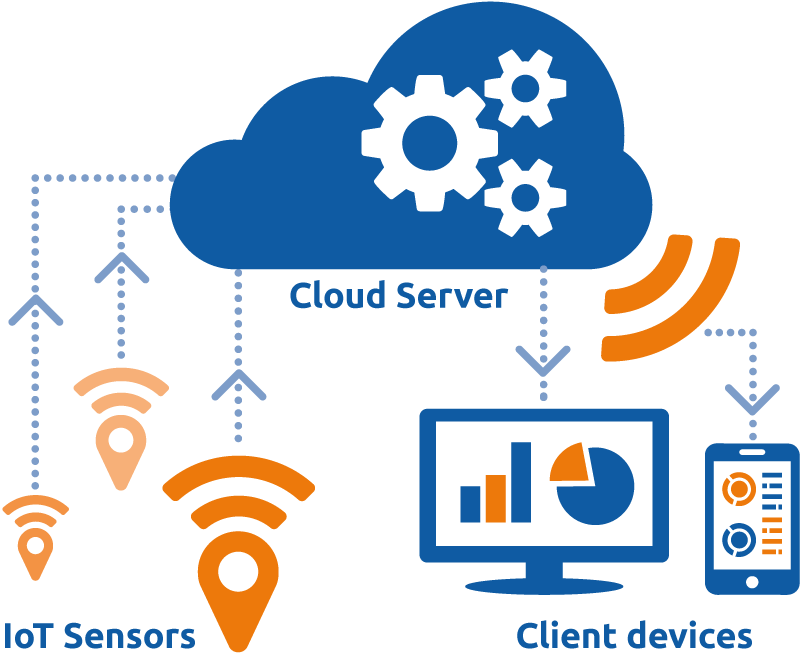
The last component is all about making the data useful to the end-user in a simplified and comprehensive manner despite the project scale. For example, with Motherapp’s Smart Crowd Management Solution, an IoT solution in Hong Kong that analysed crowd and traffic data can be sent through text or app notification to the public or to the internal team for further action. Other than on mobile, this sorted data can also be showcased on large LED screens and another analytics tool that will support the development of smart cities.
To Recap:
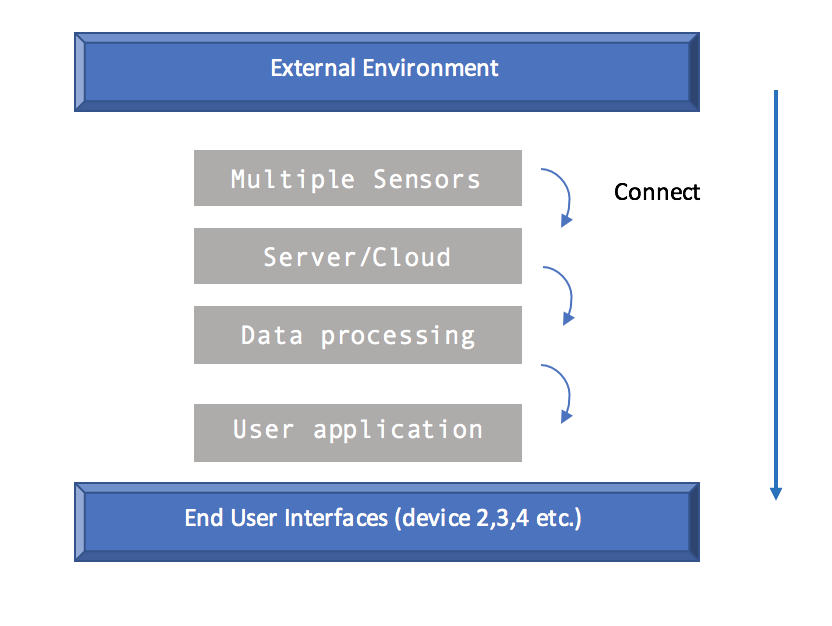
This technology ‘stack’ comprises of product hardware, embedded software, connectivity, a product cloud consisting of software running on remote servers, a suite of security tools, a gateway for external information sources, and finally integration/application with enterprise business systems.
Some bigger-scale examples can be seen from wearable devices like an Apple Watch, Fitbits to virtual control in smart homes such as the DoorBot (now named Ring), and now even smart, driverless cars (Waymo). It is exciting to see what else the IoT can enable in smart cities and societies. In the next article on IoT, we will delve deeper into the capabilities and real-life application of smart, connected products.
Are you a business in Hong Kong? Get a quote about our IoT solutions today!
The increasingly online nature of our generation together with the strive for Industry 4.0 and digitalisation initiatives from the private and public sectors will be the driving force for the future of smart connected systems. To learn how we have adopted this technology in our projects, feel free to click through our case studies or get in touch with us at insight@motherapp.com.
Perhaps you can better make use of the products you own or the data you have, to create a seamless process.
FAQ’s About IoT and IoT Solutions
What is an IoT cloud solution?
Combining IoT solutions together with cloud computing gives consumers and businesses additional value by helping lower the costs of on-site architectural development.
What are the key components of an IoT solution?
While there are many components of IoT Solutions, a complete system usually consists of sensors, a connectivity engine, data processing and user application.
Who provides IoT solutions?
While there are dozens of reputable companies offering IoS solutions, our track record at MotherApp demonstrates genuine leadership to tackle 21st century problems. Contact us today to see how we can help solve your problems.
How do we create scalable IoT solutions?
The best way to implement IoT solutions that are scalable is to use a flexible platform that can adapt to the unknown changes of the future.
Follow us on social media!
Further research:
